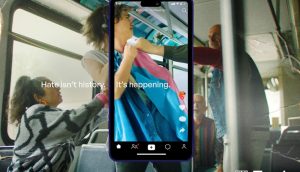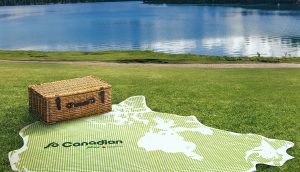Strategy asked the top brass at media agencies across the country to name their brightest young media minds. The winner will be selected by the strategy Media Agency of the Year jury and announced this fall. This week’s profile is on Dorothy Zarska, a communications strategist with M2 Universal, who played a leading role in developing the mutlimedia campaign for RBC’s Blue Water Project, launched Friday. Here, Zarska talks about her role in the project, and making sure the media matched the ‘green’ message.
Dorothy Zarska likes to pay attention to detail. Little things can really matter in a campaign, like the size of the carbon footprint it leaves.
The 25-year-old planner, who signed on with M2 in 2007, knew that walking the walk as well as talking the talk would be critical to the authenticity of the marketing behind RBC’s Blue Water Project. The three-year-old CSR initiative, which gives grants to North American charities to fund programs in watershed protection and providing access to clean drinking water, launched its first multimedia campaign for the project on Friday. (Creative on the campaign was handled by Montreal’s Cloudraker.)
In a break in media strategy for the FI, the campaign for the Blue Water Project focuses on TV and digital media, while RBC campaigns typically involve a lot of print and OOH, Zarska explains.
‘Typically we don’t consider environmental footprints while we’re planning, but knowing that RBC can be scrutinized for what they’ve done, or investments they’ve made in the past, we wanted to make sure this was bulletproof and that there was an environmental message even within the advertising.’
To raise awareness about the Project, which serves as one of RBC’s signature causes, Zarska and her team put together theme blocks surrounding relevant TV content featured on broadcast partners including Discovery Channel and Global.
On Discovery on June 6, the RBC Blue Water Project sponsored a 10-hour marathon of Life, a series that gives viewers an up-close look at the struggle for survival among different species in the natural world. It also sponsored two segments per show for a week on Discovery flagship Daily Planet, all dealing with water, and on Global, the FI sponsored a two-day ‘water weekend,’ in which two hours of programming each day was themed in line with the initiative.
The digital hub of the campaign is the project’s Facebook page, with a grant-recipient-generated content strategy scheduled through to 2011, as well as its microsite and branded YouTube channel. The video content up on the YouTube page includes three short films – which were also used for the campaign television spots, launched this weekend – profiling grant recipients, with three more going into production this week. The segments will eventually be developed into a full-length documentary, and although distribution has yet to be finalized, the filmmakers who have worked on the six spots have been encouraged by RBC to submit their films to the Toronto International Film Festival, of which RBC is a sponsor.
The Facebook fan page was launched with the RBC Blue Water Facebook Challenge, which asked people to sign up to be fans of the page with the goal of garnering 10,000 ‘likes’ – if achieved, the FI would donate $10,000 to a grant recipient. It worked: there are now over 12,000 fans of the page, and charity Free the Children will get an extra $10,000 in funding.
In addition to her work on the Blue Water Project, Zarska has contributed media strategy to other aspects of the RBC business, in particular, branch openings. The problem, she found, was that many of RBC’s new branches open in small Canadian markets, and good photos or details of available billboards in these markets weren’t always readily available. To help better plan OOH, Zarska created a best practice at the agency whereby all new branch opening locations are analyzed through Google Maps and Streetview to ensure ideal OOH locations are hand-selected for purchase.
Additionally, she would like to to introduce more mobile elements into RBC’s media planning. ‘I’ve been trying to get mobile on every single plan, especially now because a few other financial institutions have come out with mobile applications,’ she explains. ‘But I think it’s finding the need first. We can’t just put an app out there and expect it to do things for us.’























